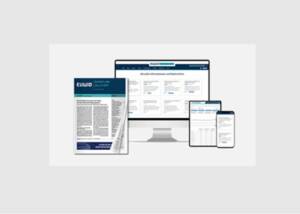HERMA: New label adhesive material with fibers from the silphia plant
News General news
- New HERMAsilphie labelstock (grade 341) uses paper made from fibers from the silphia plant, which until now has been used entirely for biogas production.
- Compared with energy corn, the silphia plant scores with many environmental advantages that bees, among others, greatly appreciate.
- Etiket Schiller is the first print shop to produce labels from this resource-saving adhesive material.

With an adhesive material made from silphia paper, HERMA is consistently pushing ahead with its chosen path of demonstrating new possibilities for resource-saving labels. The silphia plant has already been cultivated in Germany for several years as an energy crop to produce biogas. Compared to the notorious energy corn, it offers a number of environmental advantages. The special feature is that up to now, the Danube silphia has been used entirely for energy. Now, the material use of the fibers is possible in the sense of a cascade utilization. They are separated by means of a biothermal process prior to bioenergy production and processed into a new, regional and sustainable raw material. The corresponding labels can be printed untreated. Additional embossing gives them a noble yet natural appearance. This is because individual fibers of the silphia plant are still visible in the structure of the material. This also visually underlines the approach of special sustainability. The adhesive material is equipped with HERMA adhesive 63B, a versatile UV acrylic adhesive with excellent adhesion properties. The labelstock is available in quantities starting at 1,000 square meters. Based on the HERMAsilphie pressure-sensitive material (grade 341), Etiket Schiller has already become the first print shop in Germany to start producing silphie labels. "With this new material, which is manufactured entirely in Germany, we can expand our environmentally friendly portfolio in a targeted manner," says Susanne Daiber, Managing Director of Etiket Schiller. "Our customers get another option for highly appealing green packaging of cosmetics, beverages and food." Silphia fibers currently account for at least 35 percent of the label material, and in the future this could rise to as much as 50 percent. This contributes to a significantly lower carbon footprint for the labels, as the proportion of wood pulp, which is usually imported from far away, is reduced accordingly. The silphia labels can later be recycled in the regular waste paper cycle. Silphia plants and their fibers have already been used successfully for some time in the manufacture of folding cartons.
Good for bees & co.
The environment also benefits from this approach in other ways: The yellow-flowering silphia plant provides an excellent habitat for bees and other insects or wildlife. It is popular with beekeepers because of its high honey yield. It roots up to three meters deep and is a perennial crop, meaning the plant overwinters after harvest in the fall and resprouts the following year. It usually stands in one location for about ten years. This results in good CO2 absorption, which it can bind in the soil in the form of humus via its root system. Also important for the environment: unlike energy corn, the silphia plant requires less water and few to no pesticides. "The use of the silphia plant is further proof of how resources can be conserved in the production of labels," says Dr. Ulli Nägele, Head of Development at HERMA Haftmaterial. "We will continue to keep our eyes open in this regard and develop promising approaches in the future."










